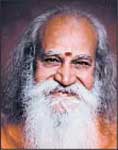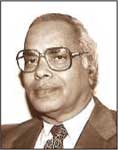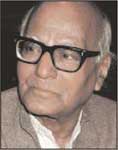 REVIEWS & COMMENTS
REVIEWS & COMMENTS
 Sri Sri Swami Satchidananda, Founder of Satchidananda Ashram and Light of Truth Universal Shrine (LOTUS); renowned yoga master and visionary; Yogaville, Virginia§
Sri Sri Swami Satchidananda, Founder of Satchidananda Ashram and Light of Truth Universal Shrine (LOTUS); renowned yoga master and visionary; Yogaville, Virginia§
Lemurian Scrolls is a fascinating work. I am sure the readers will find many new ideas concerning ancient mysteries revealed in this text, along with a deeper understanding of their importance for the coming millenium.§
 Patricia-Rochelle Diegel, Ph.D, well known teacher, intuitive healer and consultant on past lives, the human aura and numerology; Las Vegas, Nevada§
Patricia-Rochelle Diegel, Ph.D, well known teacher, intuitive healer and consultant on past lives, the human aura and numerology; Las Vegas, Nevada§
I have just read the Lemurian Scrolls and I am amazed and pleased and totally in tune with the material. I’ve spent thirty plus years doing past life consultation (approximately 50,000 to date). Plus I’ve taught classes, seminars and retreats. But I’ve never found as complete a book on many important pieces of information as Lemurian Scrolls. The Lemurian Scrolls will enlighten all who read it and it will become a “Source” that will constantly be referred to by serious students, teachers, leaders and metaphysical and spiritual groups. I’ve told many clients and students about their origin from the Pleiades, and it’s exciting to know that we’ve discovered the Eighth Sister (only one more to find in the next century). It’s now time for the people on Earth to remember who they were and what their original purpose is about. There are a few who are remembering their origin and what their purpose is on Planet Terra (Earth). As they awaken they will start to awaken others and they in turn will awaken others, etc. When humankind gave up their “spiritual bodies” and took on earthling bodies, they forgot who they really were. Now is the time for them to reawaken, so they can help the rest of the people on the planet. The time is now! Thank you so much for the wonderful information in your book! It has also opened up many new doorways for me.§
 K.L. Seshagiri Rao, Ph.D., Professor Emeritus, University of Virginia; Editor of the quarterly journal World Faiths Encounter; Chief Editor of the forthcoming Encyclopedia of Hinduism§
K.L. Seshagiri Rao, Ph.D., Professor Emeritus, University of Virginia; Editor of the quarterly journal World Faiths Encounter; Chief Editor of the forthcoming Encyclopedia of Hinduism§
Sivaya Subramuniyaswami, a widely recognized spiritual preceptor of our times, unveils in his Lemurian Scrolls esoteric wisdom concerning the divine origin and goal of life for the benefit of spiritual aspirants around the globe. Having transformed the lives of many of his disciples, it can now serve as a source of moral and spiritual guidance for the improvement and fulfillment of the individual and community life on a wider scale.§
 Ram Swarup, intellectual architect of Hindu spirituality and culture in India; founder of Voice of India; author: The Word as Revelation, Understanding Islam Through Hadis; New Delhi§
Ram Swarup, intellectual architect of Hindu spirituality and culture in India; founder of Voice of India; author: The Word as Revelation, Understanding Islam Through Hadis; New Delhi§
Lemurian Scrolls is a very unusual kind of book both in content and even more so in methodology. Lately we have gotten used to the idea of man’s journey to the moon and to his possible journey to other more distant planets in the future, but Lemurian Scrolls tells you about man’s actual journey to the Earth from the Pleiades millions of years ago. The idea goes against our present scientific wisdom, but on that account alone we need not reject its possibility altogether. ¶Though man is apparently terrestrial, there is no difficulty in admitting that he derives energies, impulsions and influences from the farthest corners of the world. Some scientists believe that life on Earth has an unknown astral source. Some form of seed life floated to Earth and, finding an hospitable habitat, evolved into its present variegated forms. Others hold that there are beings on other planets very much like us here, and they may even be trying to establish electronic contact with us. ¶What is intriguing is that Lemurian Scrolls claims to tell us of an event that actually took place. Its philosophic rationale is that nothing that happens is altogether lost but is taken up and recorded in the subtle medium of space (akasha); that if we can read these akashic records, we can recapture the past. The account in Lemurian Scrolls is based on the author’s capacity to read these records. In the yogas, such a capacity and much more is admitted. In this system of thought nothing is so distant, nothing so hidden, that it cannot be known. The book is ultimately about Gods, the Self, the sages, entelechy, about seeking and sadhana, which are of interest to all on a spiritual quest. ¶I also find the book in keeping with the spirit of old sages who gave primacy to the subtle over the gross, who derived the visible from the invisible, the lower from the higher seed-form. They believed that man is an epitome of all reality, that he is the whole world and all times in miniature, a veritable microcosm (pinda). To study him is to study the whole macrocosm (brahmanda). The approach makes a deep philosophic sense. ¶As the sages looked within, they saw that the truths of the spirit are also the basis of man’s more physical and social welfare, yogakshema; that when men follow spiritual and moral excellence, they are also rich in things of life and nature’s gifts. Their basket is full, and the earth yields more abundantly and freely, their herbs are more nourishing. But as men shrink in spiritual and moral qualities, they also shrink outwardly in welfare and well-being. They are short-lived and they live in want and poverty. They live by the sweat of their brow. ¶When projected on the time screen, the concept gives us the theory of ages (yugas), which are beautifully described in the Mahabharata, the Puranas, the Ramayana and in the Buddhist literature. There is a beautiful account of these yugas in the Pathika-vagga of Digha Nikaya. ¶Now, a little more about akasha and akashic records and the capacity to read them. In the system of yogas, this kind of knowledge and other knowledges come under the discipline of samyama. Though these are seldom pursued for their own sake. They come more often than not, when necessary, as by-products to those who pursue brahma-jnana. ¶The Chandogya Upanishad speaks not only of the akasha outside man, but also of the inner akasha (antah-akasha), and even of akasha within the heart. Not many can read the akashic records, but many are alive to what is recorded in the inner akasha. But even that needs the development of an inner seeing and inner hearing. All this requires yama and niyama, ekagrata (one-pointedness), sattva samshuddhi (purification of the inner being). ¶Lemurian Scrolls discusses this subject in great earnest; it discusses the problems connected with receiving and transmitting this knowledge. It discusses the continuity of spiritual knowledge (jnana-pravaha), its channels, its masters and disciples, the temples, ashramas, viharas and monasteries, the need for and the problem of training, establishing and stabilizing spiritual communities that are able to protect and transmit this knowledge.§
